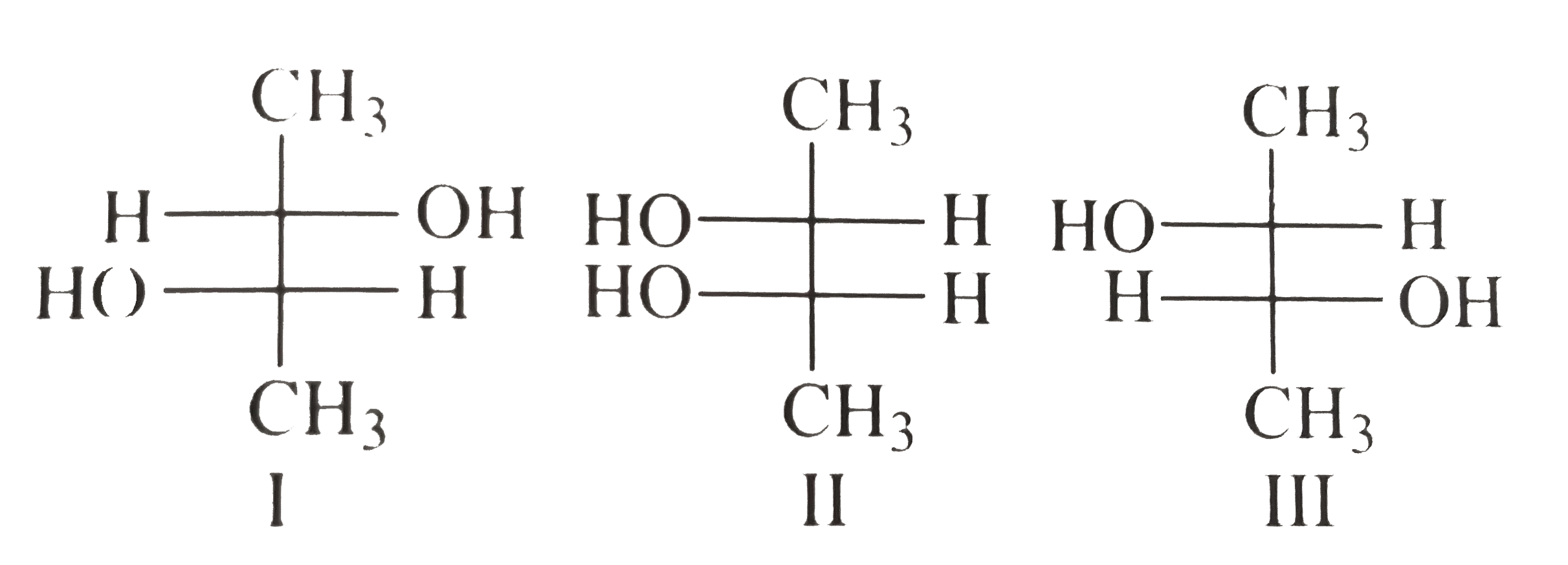Which of the following pair represent pair of diastereomers ? Solution in Telugu
Meso tartaric acid and (l) tartaric acid


All of these
The correct Answer is:D
Those stereoisomers which are not mirror images of each other are diastereoisomers.
Topper's Solved these Questions
- ISOMERISM (STRUCTURAL & STEREOISOMERISM)BOOK - MS CHOUHANCHAPTER - ISOMERISM (STRUCTURAL & STEREOISOMERISM)EXERCISE - LEVEL 2
66 Videos
- ISOMERISM (STRUCTURAL & STEREOISOMERISM)BOOK - MS CHOUHANCHAPTER - ISOMERISM (STRUCTURAL & STEREOISOMERISM)EXERCISE - LEVEL 2 (SUBJECTIVE PROBLEMS)
17 Videos
- HYDROCARBONS (ALKYNES)BOOK - MS CHOUHANCHAPTER - HYDROCARBONS (ALKYNES)EXERCISE - Level -1
32 Videos
- IUPAC NAME BOOK - MS CHOUHANCHAPTER - IUPAC NAME EXERCISE - LEVEL-2 (SUBJECTIVE PROBLEMS )
1 Videos
Similar Questions
Match the Column (I) and (II).

View SolutionNumber of chiral isomers are:

View SolutionComplete the following reaction

View Solution
When IUPAC name of following compound is given, then double bond and substituent gets respectively (x and y) number so the sum of (x + y) will be
View SolutionIdentify the pairs of enantiomers and diastereomers from the following:

View SolutionWhich of following pair is diastereomers?
View SolutionWhich of the following reactions results in the formation of a pair of diastereomers?
View SolutionWhich of the following, when undergoing addition of HBr, will form ONLY a pair of diastereomers?
View SolutionWhich of the following pair represent pair of diastereomers ?
View SolutionIdentify the pair of enantiomers and diastereomers from the following :
View SolutionWhich of the following statements is true for a pair of diastereomers ?
View SolutionWhich of following pair is Diastereomers:
View SolutionDetermine if the following pairs are identical, isomers, enantiomers, or diastereomers.
View SolutionWhich of the following pairs are diastereomers?
View SolutionWhich of the following pairs of compounds are diastereomers ?
View SolutionWhich of the following reactions results in the formation of a pair of diastereomers?
View Solution
